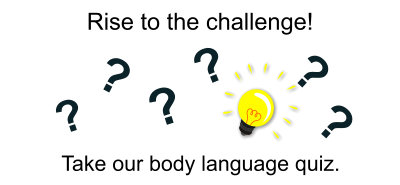How Can We Help?
The Facial Feedback Hypothesis
I send most of my body language and intuition tips via v-mail (short videos delivered to your inbox).
The Facial Feedback Hypothesis
The facial feedback hypothesis says that in just 3/100th of a second our facial muscles imitate what we see and our feelings are connected to our facial expressions. In other words, not only does our emotion cause our facial expression, but our facial expression will cause our emotion. For example, if you were to make an angry facial expression, you would begin to feel angry. If you are with someone who is making a sad face, your face will involuntarily mimic their expression and you will start to feel sad. You will feel their sadness.
The facial feedback hypothesis is essentially an emotional feedback loop which we call empathy.
Have you ever been speaking with someone who is telling you that they are happy but you start to feel sad as you watch them? They might be trying to hide their sadness but your subconscious has picked up their sad expression, then you subconsciously mimic their sad expression, and you start to feel sad.
Or maybe you’re speaking with someone who tells you “I’m not angry” but you don’t believe them? They might be trying to hide their anger but your subconscious has picked up their anger expression, then you subconsciously mimic their anger expression, and you start to feel angry.
You can subconsciously pick up on people’s underlying emotions, and as you learn the seven micro expressions you can bring your observations to a more conscious level so you can use this information to help guide your interactions.
Micro Expressions
The seven universal micro expressions are:
Now what?
Submit your body language questions.
Do you want a body language speaker, trainer, or coach? Contact Monica Levin.





